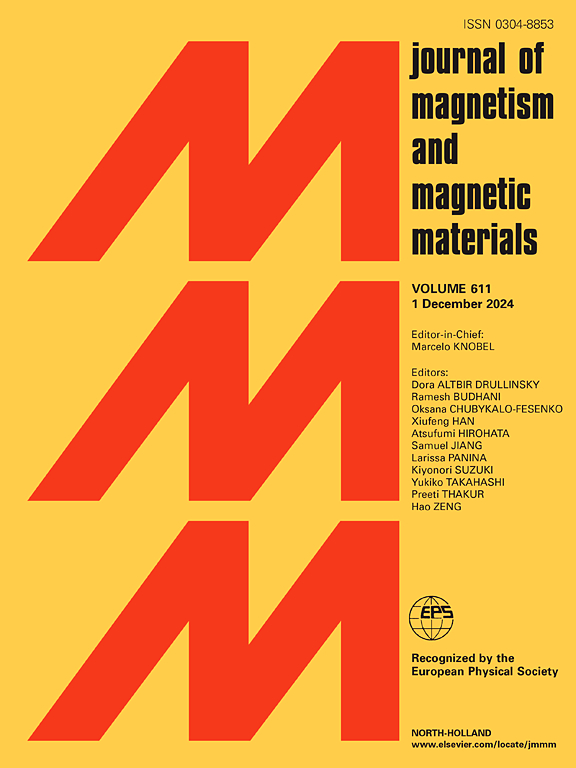Metrological determination of the soft magnetic properties of slot wedge material in electrical machines
IF 2.5
3区 材料科学
Q3 MATERIALS SCIENCE, MULTIDISCIPLINARY
引用次数: 0
Abstract
Soft magnetic slot wedges as a composite of iron powder, resin and glass fiber are used to close the slots for the winding in electrical machines. Due to their magnetic properties, they influence the magnetic air gap field and the stray behavior of the electrical machine. By precisely dimensioning the material parameters, a reduction in the additional no-load losses and respectively an increase in the efficiency of the machines can be achieved. The determination and validation of the material properties are essential for the development of suitable materials and machine models. This document presents a measurement method for determining the magnetization curve and total losses, which in particular also enables the application to anisotropic materials as well as powders and pastes. The method was validated by comparative measurements using a standardized measurement method. After validation, various slot wedge materials were tested, and the results compared. It is shown that the magnetization curve and the total losses are depending on the filler share of soft magnetic particles. Using the specialized measurement setup, it was also found that some traditional soft magnetic slot wedge materials show anisotropic characteristics. In machine models with soft magnetic slot wedges, the investigated anisotropy as well as the total losses have not been considered in detail yet.
求助全文
约1分钟内获得全文
求助全文
来源期刊

Journal of Magnetism and Magnetic Materials
物理-材料科学:综合
CiteScore
5.30
自引率
11.10%
发文量
1149
审稿时长
59 days
期刊介绍:
The Journal of Magnetism and Magnetic Materials provides an important forum for the disclosure and discussion of original contributions covering the whole spectrum of topics, from basic magnetism to the technology and applications of magnetic materials. The journal encourages greater interaction between the basic and applied sub-disciplines of magnetism with comprehensive review articles, in addition to full-length contributions. In addition, other categories of contributions are welcome, including Critical Focused issues, Current Perspectives and Outreach to the General Public.
Main Categories:
Full-length articles:
Technically original research documents that report results of value to the communities that comprise the journal audience. The link between chemical, structural and microstructural properties on the one hand and magnetic properties on the other hand are encouraged.
In addition to general topics covering all areas of magnetism and magnetic materials, the full-length articles also include three sub-sections, focusing on Nanomagnetism, Spintronics and Applications.
The sub-section on Nanomagnetism contains articles on magnetic nanoparticles, nanowires, thin films, 2D materials and other nanoscale magnetic materials and their applications.
The sub-section on Spintronics contains articles on magnetoresistance, magnetoimpedance, magneto-optical phenomena, Micro-Electro-Mechanical Systems (MEMS), and other topics related to spin current control and magneto-transport phenomena. The sub-section on Applications display papers that focus on applications of magnetic materials. The applications need to show a connection to magnetism.
Review articles:
Review articles organize, clarify, and summarize existing major works in the areas covered by the Journal and provide comprehensive citations to the full spectrum of relevant literature.
 求助内容:
求助内容: 应助结果提醒方式:
应助结果提醒方式:


